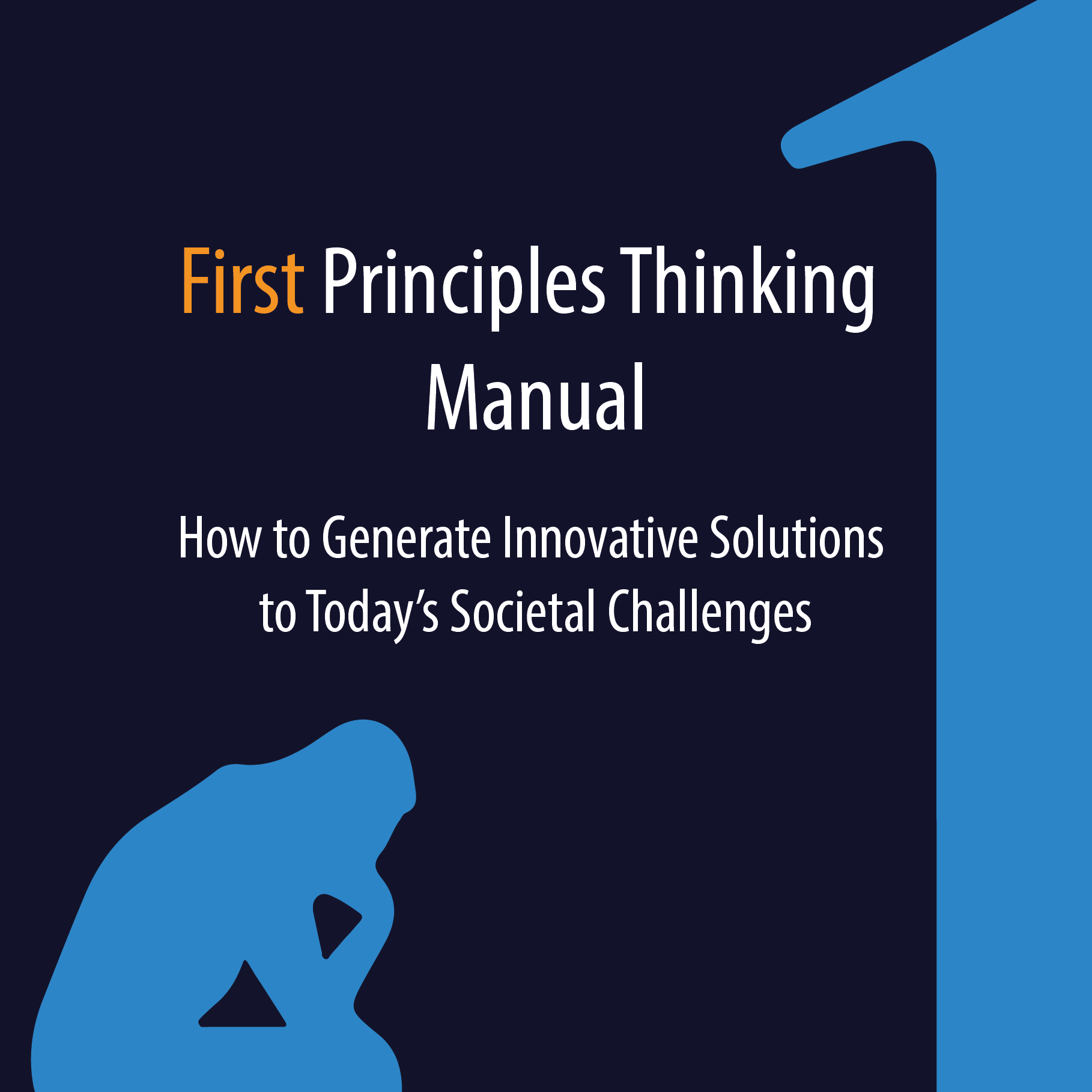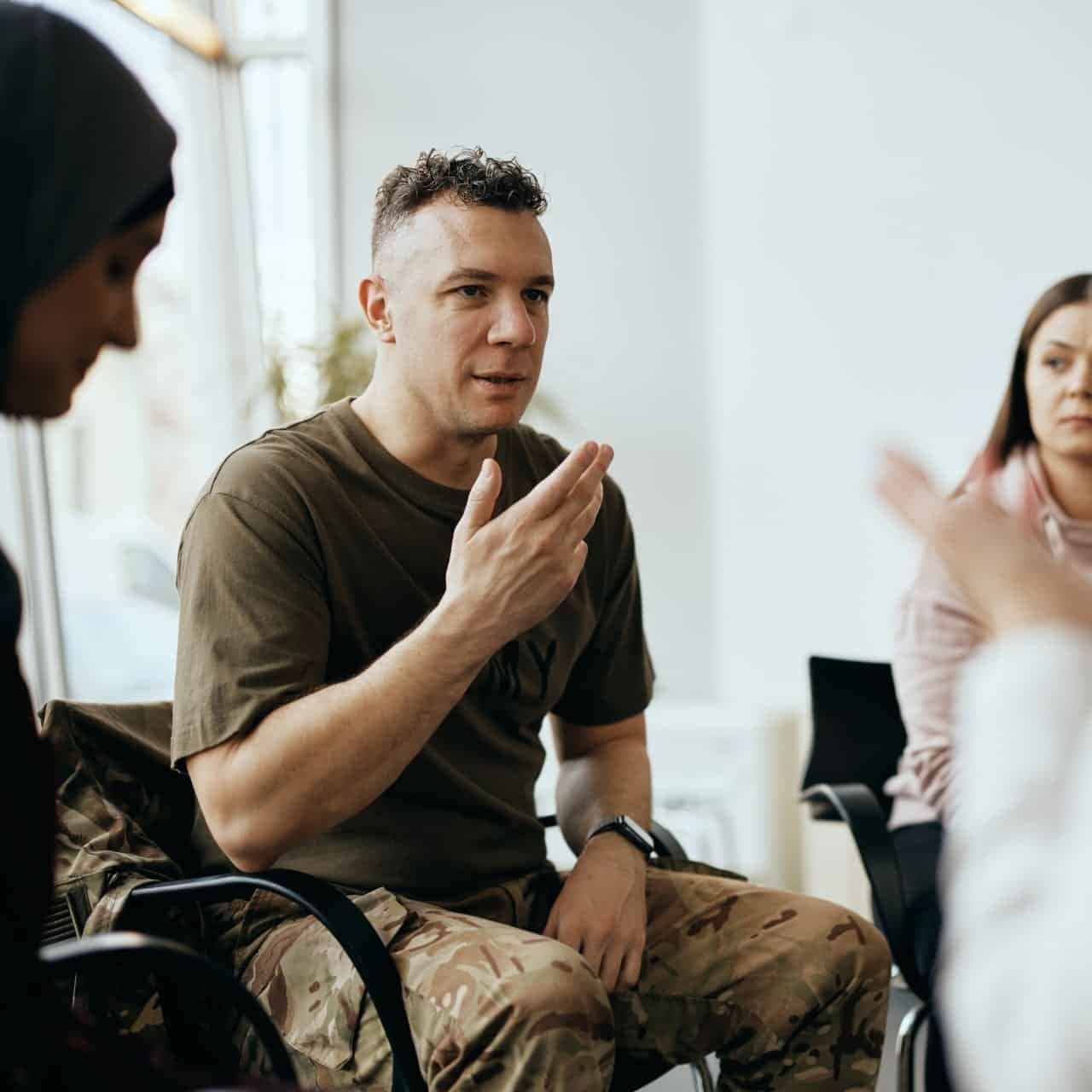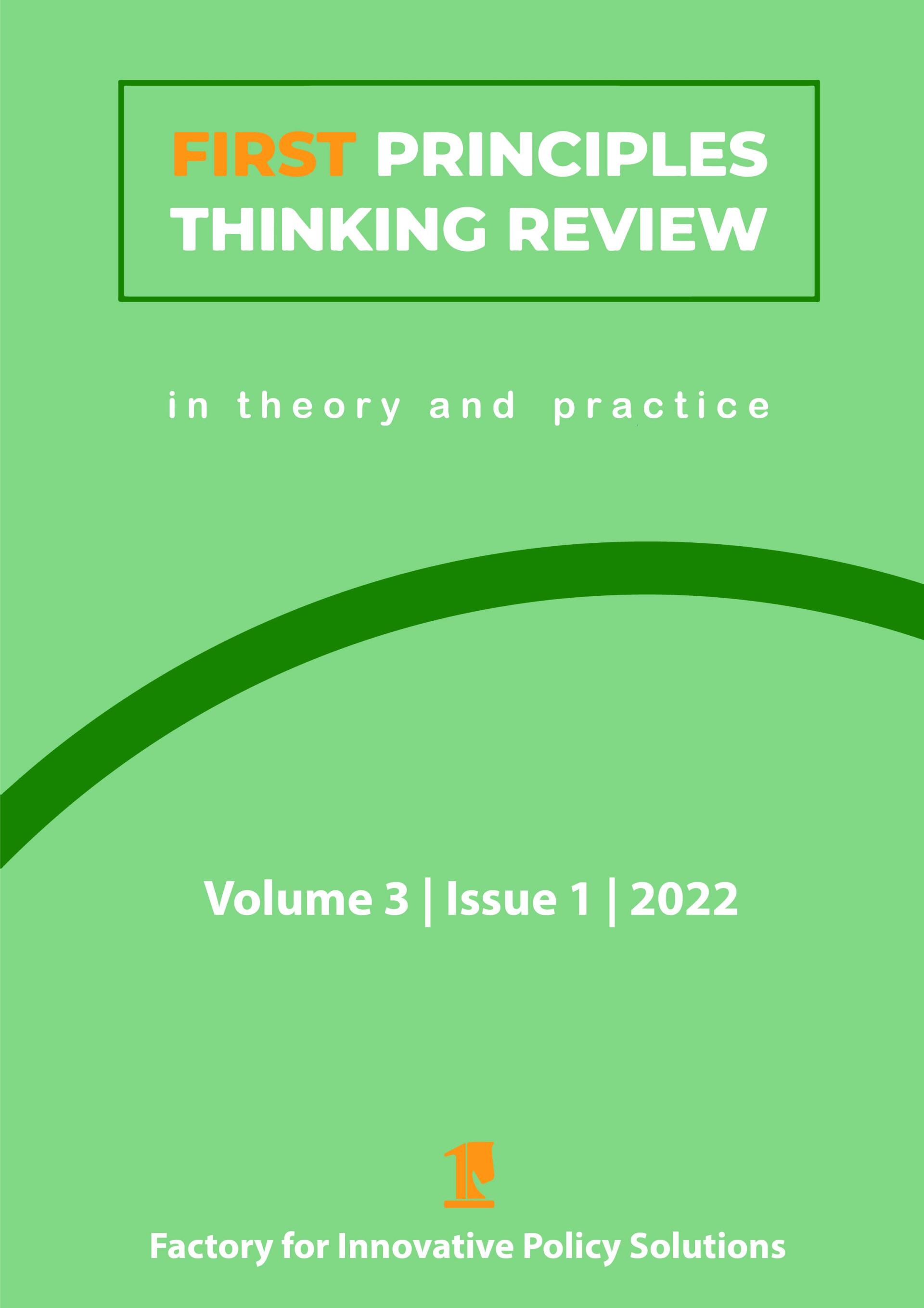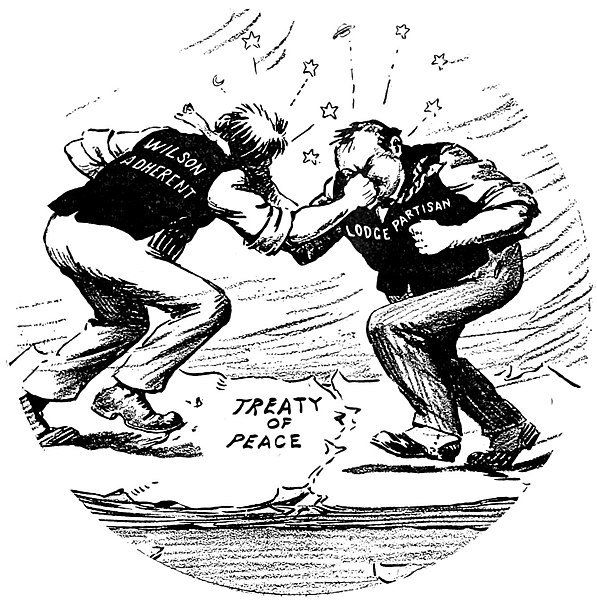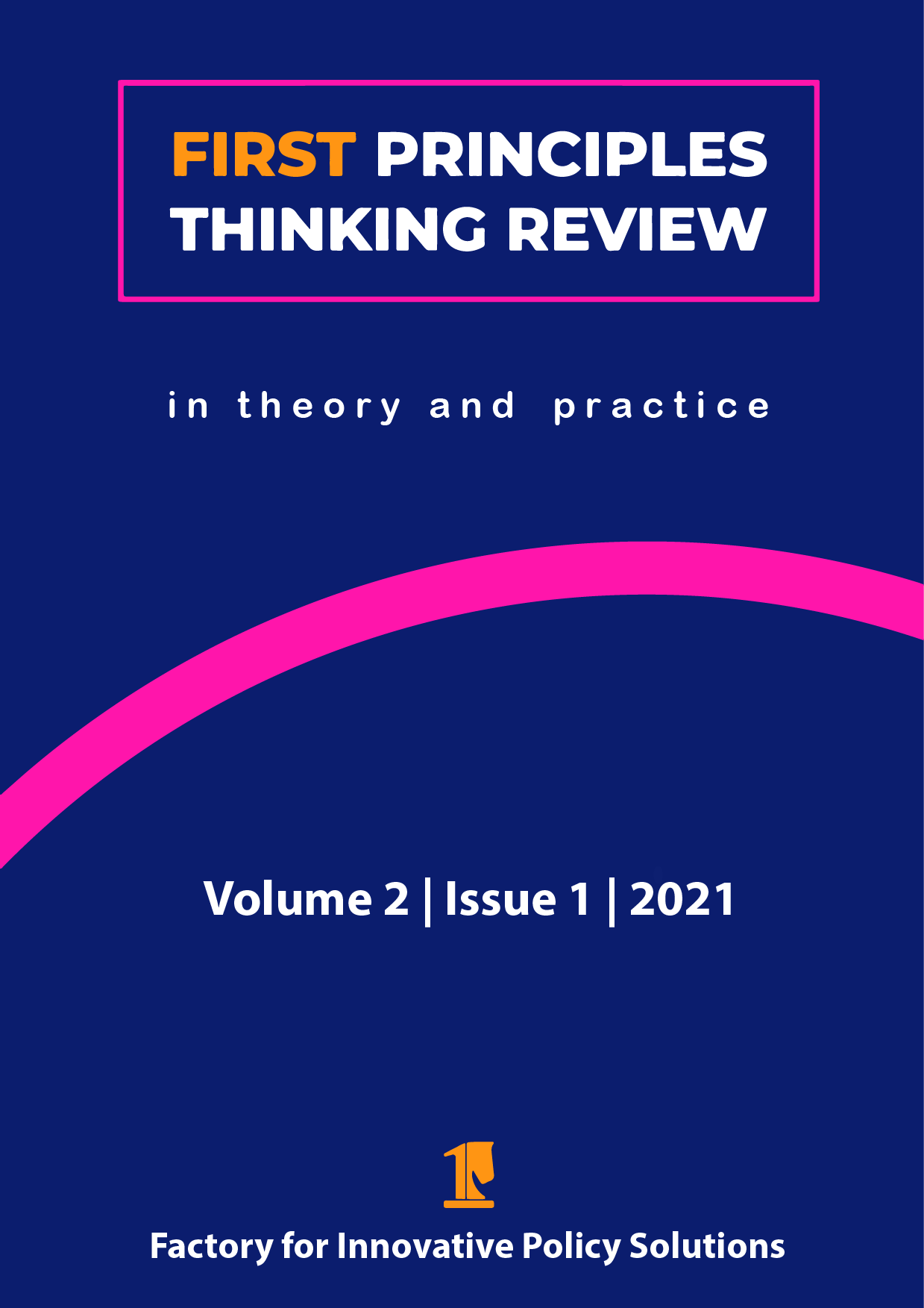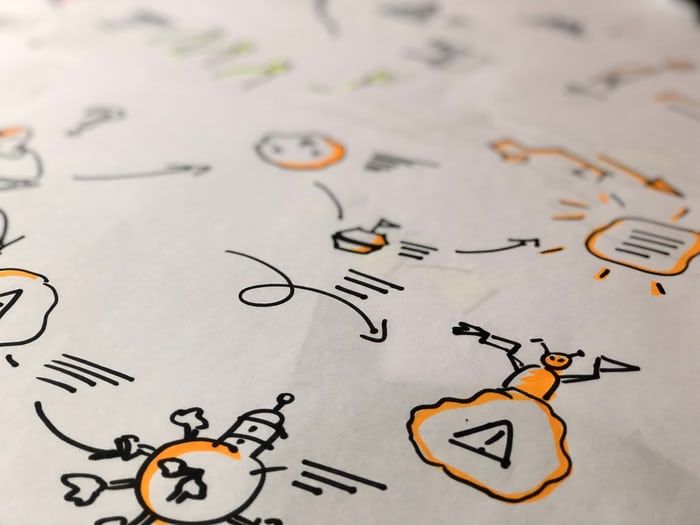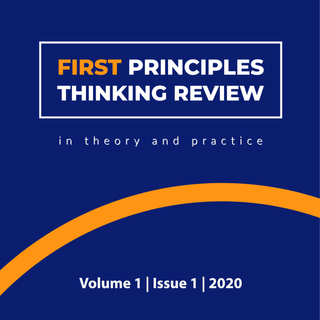First Principles Thinking as a Collaborative Effort to Bring Hope to a Troubled Neighbourhood

Photo by Marvin Meyer
This article presents the first principles thinking process as a collaborative effort undertaken by three problem-solvers from the Factory for Innovative Policy Solutions. In response to the challenge of improving living conditions in the Jan Luykenlaan neighbourhood of The Hague in the Netherlands, the team demonstrates how individually generated ideas can be synthesised in order to produce original approaches to achieving a common goal.
Keywords: brainstorming, first principles thinking, teamwork
Introduction
Early 2021, the municipal government of The Hague published a request for solutions to overcome some local, yet highly problematic, societal challenges (Startup in Residence Intergov, 2021). Specifically, criminal activities such as drug trafficking and illegal gambling in the Jan Luykenlaan neighbourhood have made the area an unpleasant and dangerous place to live for many residents. With people facing threats and intimidation from local criminals and police interventions proving ineffective in solving the chronic nature of the neighbourhood’s problems, many of Jan Luykenlaan’s residents have given up hope in restoring a sense of ownership over their community.
What follows is an exercise in first principles thinking in which three problem-solvers use the method to find solutions to the challenge of improving social conditions in The Hague’s Jan Luykenlaan neighbourhood. While normally employed individually, first principles thinking can also be performed as a collaborative effort. In this case, three problem-solvers from the Factory for Innovative Policy Solutions with different backgrounds and areas of expertise use first principles thinking as a means of giving structure and direction to their search for innovative ideas.
Therefore, the process begins with a mutual brainstorming session to clearly identify a common objective to achieve as well as a common set of obstacles to overcome. With these steps taken together, the problem-solvers are then free to work independently to question their own assumptions, uncover first principles and come up with new solutions. With every step taken independently, each problem-solver’s path will inevitably begin to diverge from the others as personal biases and experiences shape the thinking process and produce original ideas. Finally, however, all the ideas produced independently are shared, synthesised and refined together before actionable solutions can be selected.
Step 1: Identify your objective
The municipal government of The Hague was clear in its desired objectives for this challenge. Its call for solutions requested ideas that could “offer residents some positivity and hope in this highly problematic environment”. While the project was mainly directed towards residents on the street, the initiative also welcomed solutions that would target “entrepreneurs who actively try to contribute to improving the living environment” (Startup in Residence Intergov, 2021). Therefore, the primary objectives of this project are:
- To decrease criminal activity in the neighbourhood
- To decrease nuisances for the living environment
- To create a more attractive climate for local businesses
Given the broad nature of these objectives, the municipal government also stated that it would be willing to accept various kinds of solutions, such as physical or social interventions, under the condition that they could be implemented in the short term. The call for solutions did state, however, that covenants, policy documents, recommendations without applicable steps and major interventions in real estate or open space would be excluded from consideration.
Step 2: List the obstacles
The call for solutions also included a briefing on some of the existing obstacles that have impeded past efforts of improving conditions in the Jan Luykenlaan neighbourhood. As the problems of criminal activity and nuisance have been occurring in the area for over 15 years, the obstacles to overcoming them are quite deep and structural in nature. Specifically, the call for solutions highlights the following issues:
- Low social capital and sense of ownership among residents
- Threats and intimidation by business owners and their patrons
- Lack of trust in the competence of the municipal government, police and other public institutions
By establishing three clearly defined objectives along with a common set of obstacles that stand in the way of achieving them, the team of problem-solvers has effectively created a framework that will provide a sense of structure and direction for the rest of the process. At this point, the problem-solvers begin to use these guidelines in order to pursue the subsequent three steps of the process independently: (3) question your assumptions, (4) identify some first principles and (5) come up with new solutions.
Steps 3-5: First principles thinker I
Alexander Verkerk focuses on the obstacles of there being intimidation as well as low ownership and social capital among residents.
Question your assumptions
- In what situations does intimidation happen, or rarely happen?
- What makes one own something?
- What are elements of strong social capital?
Uncover some first principles
- Intimidation (or crime in general) is less likely to happen when the physical environment is clean and not intimidating itself (World Bank, 2015). What is the opposite of intimidating? Approachable/undaunting (Word Hippo, n.d.). What embodies such characteristics? Children, pets, nature, bright objects.
- Ownership is the state or fact of exclusive rights and control over property. Owners are typically able to name their belongings and write their names on them.
- Social capital is strong when residents have shared values and/or a common purpose.
Come up with new ideas
- How can we clean up the physical environment and add physical elements related to children, trees and lights? Place more street lights, trees and art (painting/statues) either made by children or depicting children/pets.
- How can we enable residents and shop owners to name aspects within their neighbourhood? Simply allow them to actually name their streets and neighbourhood, and inscribe their names in tiles within the streets that physically make up their neighbourhood. If possible, have these inscriptions light up in the dark.
- How can we identify and promote the shared values? Ask residents and inscribe them in the tiles as well. What joint activities can residents undertake with a common goal? Create a communal garden.
Steps 3-5: First principles thinker II
Kacper Grass focuses on targeting the obstacle of threats and intimidation by business owners by means of finding alternatives to existing public institutions and building social capital among residents.
Questions your assumptions
In order to better understand the nature of the issue, it is important to know exactly who is responsible for causing the troublesome noise and other disturbances. Although unruly business owners have been identified as the primary source of the problem, it is not clear whether these business owners are actually residents of Jan Luykenlaan themselves or if they commute from other neighbourhoods. Moreover, can it be said with certainty that all of the residents of Jan Luykenlaan are victims of the noise and disturbances caused by local businesses, or do some of them actually contribute to the problem by supporting troublesome establishments?
Finally, it would be useful to know whether there already exists some sort of platform through which the residents of Jan Luykenlaan could meet to discuss community issues without having to rely on the municipal government. Therefore, three preliminary assumptions worth clarifying are:
- Are the troublesome business owners local residents or commuters?
- Are all local residents victims of disturbances, or do some actually contribute to the problem?
- Is there any kind of local platform for addressing community issues?
Uncover some first principles
Though businesses inevitably vary in their models and strategies, all businesses are dependent on their customers for profit. Therefore, it can be said with certainty that business owners will adapt to their customers’ demands if faced with the existential risk of losing their support. Relatedly, public awareness campaigns and reviews have an effect on at least some consumers’ decisions regarding businesses that either operate unethically or provide services that are inferior to those of their competition. Finally, public forums like American “town hall” meetings have proven to be cheap and inclusive ways of bringing community members together independently of public institutions. Thus, some first principles related to the challenge are:
- Businesses are dependent on customers and will adapt to their demands.
- Public awareness campaigns and reviews have an effect on consumers’ decisions.
- Town hall meetings are an effective way of bringing community members together.
Come up with new ideas
If no platform for community dialogue exists in Jan Luykenlaan, then a town hall meeting could be organized in order to first determine the source of the problem: whether the noise and disturbances originate from local business owners and local customers or if they are caused by commuters from other parts of the city. This way, residents would be able to address their concerns directly with one another without having to rely on the municipal government to play the part of an intermediary, thus giving them a sense of ownership of the issue. Once the roots of the problem are identified, then the town hall meeting could be used to organize a “public awareness committee” of local volunteers who would be responsible for writing positive reviews of businesses that abide by volume and curfew regulations and negative reviews of those that violate such regulations. These reviews could then be disseminated in both local sources like a neighbourhood newspaper or a town hall bulletin board as well as more universal sources like the internet. In conclusion, two actionable solutions to tackle this challenge would be:
- Hold a town hall meeting to determine the source of the issue.
- Organize a committee to write positive and negative reviews for local businesses according to whether they abide by regulations.
Steps 3-5: First principles thinker III
Tom Kortenbach focuses on the assumptions that local residents lack a feeling of ownership over the neighbourhood, that nuisance and noise originate from the street and that local business owners are also neighbourhood residents.
Question your assumptions and uncover some first principles
In the description of the case, there are a few assumptions. Firstly, the case description mentions that the residents lack a feeling of ownership over the neighbourhood and the property in it. But can this be argued? It is true that there is more damage compared to other neighbourhoods in The Hague, however, this can also be because the municipality invests less in the neighbourhood. The statistics, however, show that the neighbourhood Moerwijk West has 7 incidents per 1000 inhabitants of destruction and crime against public order (Allecijfers, 2021a), compared to 6 incidents per 1000 inhabitants for the municipality of The Hague as a whole (Allecijfers, 2021b).
Secondly, it is mentioned that the nuisance is coming from the shops in the street. Is it, however, likely that it originates from there or could it be from something else as the disturbance is predominantly during the evening? A more likely place where this is coming from is cafes. Moreover, as some of the problems are illegal gambling and (sexual) intimidation, this is more likely to be coming from cafe customers who had a few alcoholic drinks.
Another important factor could be whether the shop and cafe owners are from the neighbourhood, as they are likely to have a smaller feeling of ownership for the public space when they are from a different part of the city. Likely they are not from the exact street as the shop, as it is a concentration of shops. Nonetheless, it is not possible to determine if the shop owners reside in the same street. However, for the customers of the shops it is likely to conclude that they are from the same neighbourhood, as there are many small concentrations of shops in the surroundings. For the customers of the cafes this is likely to be different, however, as there are less cafes in the surrounding area, therefore, people will probably travel for a longer distance to go to one.
Come up with new ideas
As we have come up with a few first principles, by assessing the assumptions presented in the case description, we are able to come up with new ideas to solve them.
The first solution could be to arrange more entertainment for teenagers and young adults (from 15 to ~25/30), so that they will not be too bored and start to misbehave or intoxicate themselves to have some fun.
Other solutions are more focussed on enforcement, such as to arrange earlier closing times for the bars and cafes, through permits, in order to not have people leaving intoxicated at a late time. Moreover, have neighbourhood residents patrol on the streets in order to talk to people that misbehave, and if that doesn’t work have a community police officer on the street at closing time of shops and cafes. Lastly, cameras could be installed for supervision, close to the shops and cafes, to observe the locations and intervene and identify when necessary.
Step 6 and 7: Refine and select your solutions (together)
Normally, according to the steps outlined in the First Principles Thinking Manual developed by FIPS, a first principles thinker would refine his or her ideas by doing another few rounds of asking additional questions and identifying first principles according to what’s important to the applicant (e.g. innovation, transparency, etc.). However, since this is a group exercise we thought it might be interesting to instead identify overlap and synergies between our ideas and see where that takes us. In doing so we identified two themes: ownership and behavioural change.
Ownership. First a participatory town hall meeting can be organised to get a better picture of how inhabitants perceive the problems, what values they would like to see in the neighbourhood and what joint activities they foresee for the neighbourhood at large (incl. youth). They would then also be asked who would like their name inscribed in the streets, and who would like to take part in a review committee or neighbourhood patrol. Alternatively, we could organise a first principles thinking exercise in smaller groups of inhabitants, each focusing on a different problem.
Behavioural change. To encourage behavioural change, we would first of all take into account the outcomes of the town hall meeting and follow up on it by installing a review committee and neighbourhood patrol, organising joint activities like a communal garden and inscribing names and values in the streets that light up at night. We could try that for a while and, if proven ineffective, see what can be done in terms of changing closing times for bars and cafes, installing safety cameras and placing more street lights, trees and colourful pieces of art.
Conclusion
The solutions produced in this collaborative exercise were largely exploratory ideas produced by problem-solvers from outside the context of the challenge. As it is the residents of Jan Luykenlaan who are most intimately connected to their neighbourhood, it would ultimately be up to them to decide which solutions would be feasible or even desirable to implement. It is very likely that, by employing first principles thinking as a collaborative effort, local problem-solvers would be able to come up with ideas that are most compatible with local circumstances and are most reflective of their needs.
Indeed, doing a first principles thinking exercise collaboratively seems to have a number of benefits. First, having different backgrounds and approaches to first principles thinking and the issue at hand can lead to a wider range of solutions. Second, having the chance to challenge each other’s assumptions and ideas can lead to more robust first principles and ideas. Third, doing the exercise together makes it more fun and less mentally challenging, for example because you can discuss if you get stuck somewhere in the process.
However, there can also be drawbacks. First, you need a common understanding of the challenge, objective and obstacles. Fine tuning this might take more time than diving into the steps right away on your own. As our example shows, even though we settled on the same obstacles, we each approached them from a different angle. Second, the ideas of each of the applicants may not always work well together, or even be contradictory. In such instances you have to work out a solution together. One way to do so would be to undertake a few additional rounds of first principles thinking to see how seemingly contradictory ideas could actually work together effectively or find out what ideas best withstand further scrutiny.
It should also be noted that while we went through steps 3 to 5 independently at first, it can be equally fruitful (and fun!) to approach these steps collectively by way of having a “Socratic dialogue”, as outlined in the First Principles Thinking Manual.
If you have found this article useful, the Factory for Innovative Policy Solutions would be very interested to hear about your experiences using first principles thinking as an individual or in collaborative effort. Whether you are an instructor trying to get your students thinking outside the box, a manager trying to promote teamwork in the office or a private problem-solver trying to make a difference in your community, we encourage you to share your experiences with us. Moreover, if you would like to share those experiences with other innovative problem-solvers around the world, be sure to check out the
submission guidelines and submit an article for publication on our website and in the
First Principles Thinking Review!
References
- Allecijfers. (2021a). Moerwijk west Den Haag. https://allecijfers.nl/buurt/moerwijk-west-den-haag/#criminaliteit
- Allecijfers. (2021b). Den Haag. https://allecijfers.nl/gemeente/den-haag/
- Factory for Innovative Policy Solutions. (n.d.). Submit your article proposal. https://www.innovativepolicysolutions.org/submit-your-article
- Startup in Residence Intergov. (2021). Hoe brengen we een lichtpuntje in een zware probleemstraat? https://intergov.startupinresidence.com/nl/den-haag/hoop-in-probleemstraat/brief
- Verkerk, A., & Grass, K. (2019). First Principles Thinking for Societal Problem-Solving: A Manual to Generate Innovative Solutions to Today’s Challenges. Factory for Innovative Policy Solutions. https://www.innovativepolicysolutions.org/first-principles-thinking/manual
- Word Hippo. (n.d.). What is the opposite of intimidating? https://www.wordhippo.com/what-is/the-opposite-of/intimidating.html
- World Bank. (2015). Cleaner streets may be safer streets. https://www.worldbank.org/en/news/feature/2015/06/09/por-que-las-calles-mas-limpias-pueden-ser-mas-seguras
Apply first principles thinking yourself?
Would you like to apply first principles thinking yourself and have your problem-solving experience published in the First Principles Thinking Review? Then be sure to check out the submission guidelines and send us your rough idea or topic proposal. Our editorial team would be happy to work with you to turn that idea into an article.
Share this page
Disclaimer : The views, thoughts and opinions expressed in submissions published by FIPS reflect those of the authors and do not necessarily reflect the views held by FIPS, the FIPS team or the authors' employer.
Copyrights : You are more than welcome to share this article. If you want to use this material, for example when writing an article of your own, keep in mind that we use cc license BY-NC-SA. Learn more about the cc license here .
What's new?
